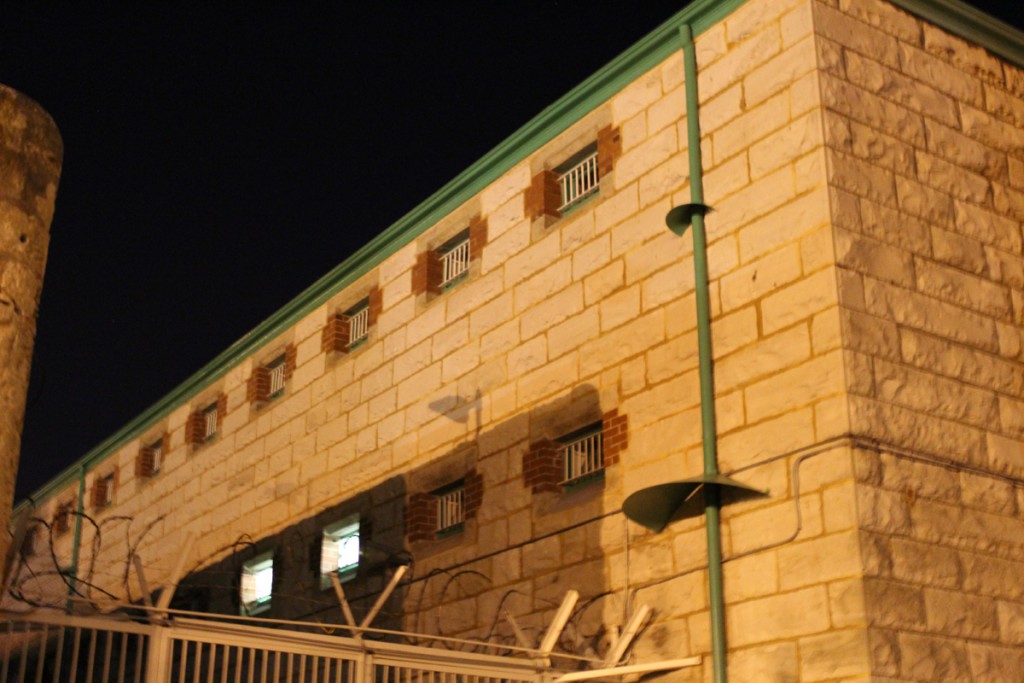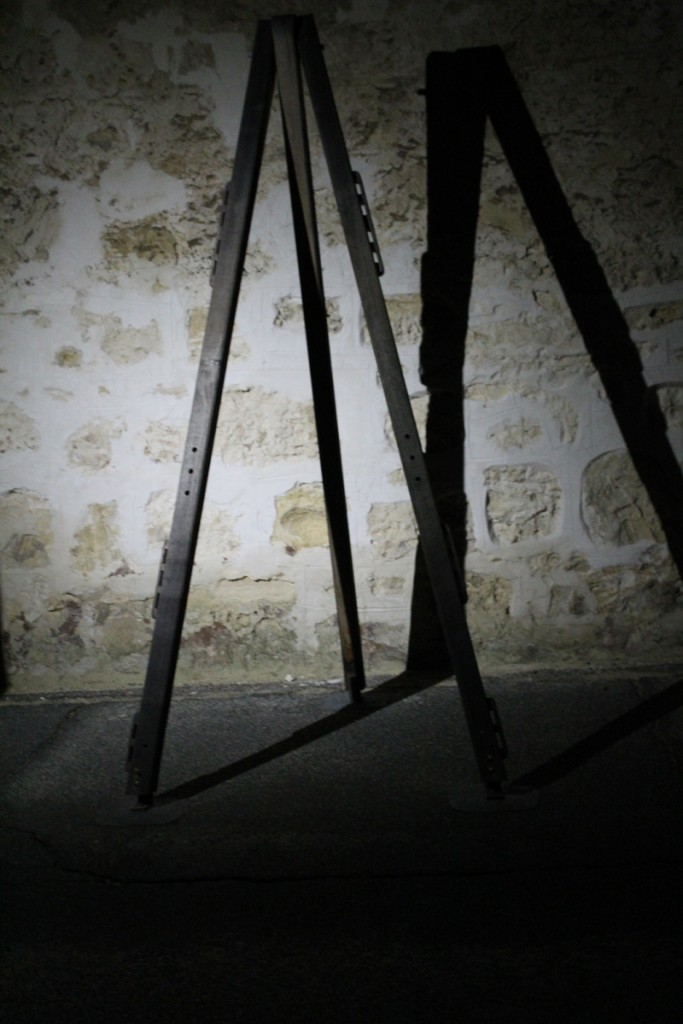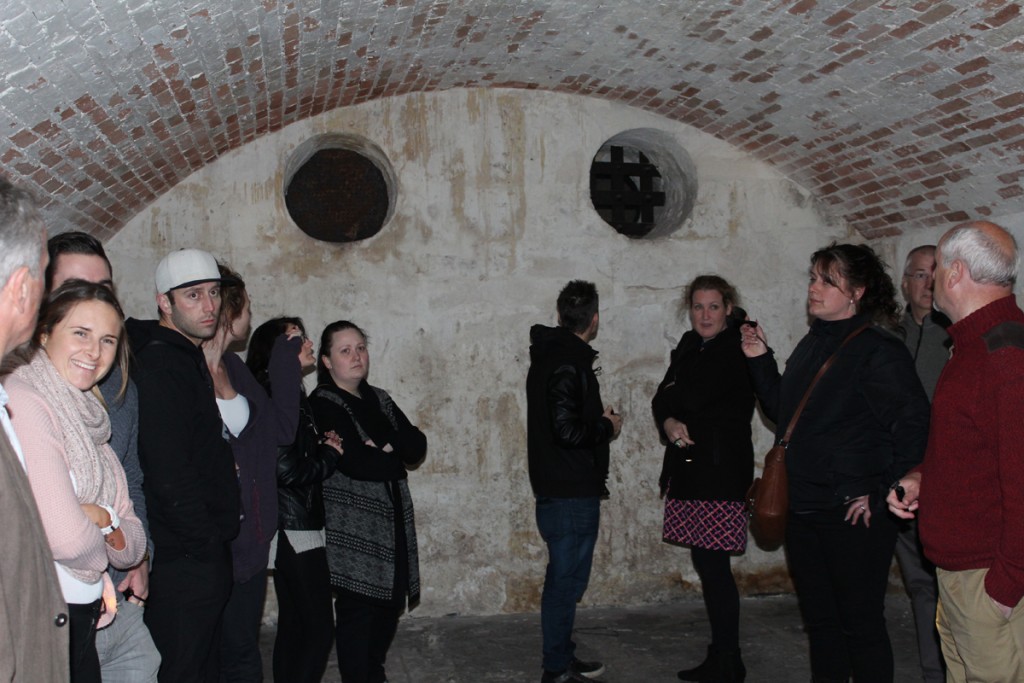Follow us on Facebook!
There is something foreboding about prisons. There used to be two large ones, right smack in urban settings in Vancouver, the old B.C. Penitentiary in New Westminster and the Oakalla Jail in Burnaby. Both now torn down. Before they tore it down, Oakalla was open for tours. We took the kids and it was grimly fascinating.
One large historical prison that is still standing is the Fremantle Prison in Fremantle, Western Australia. Australia was originally a penal colony and the Convict Establishment, as it was then known, was built by convict labour between 1851 and 1859. It is a large prison built to house up to a thousand prisoners. It operated as a maximum security prison until 1991.

Now the prison is a World Heritage Site, one of eleven sites that make up the Australian Convict Sites World Heritage Property. A sign outside the prison says “Fremantle Prison contains major evidence of the physical apparatus of an imperial convict public works establishment and of its adaptation for subsequent colonial use. The establishment is the most intact such complex in Australia, and is an outstanding symbol of the period in which Western Australia was developed using convict labour.”

And it is open to the public offering a variety of tours including a Great Escapes Tour, a Tunnels Tour (not escape tunnels, but an extensive series of water mains that ran under the prison – some are navigated by boat on the tour), an Art Tour (some convicts were talented artists) and the Torchlight Tour, a tour of the prison at night by torchlight (actually small flashlights).

We came for the Torchlight Tour which run on Wednesdays and Fridays. After waiting around a bit, we were finally led to a doorway where we each fished a small flashlight out of a bucket before entering. Inside our tour guide, an enthusiastic woman named Janine, gave us a short rundown before we headed out. We passed through the reception area where prisoners were checked in and given their prison garb, though the prison kitchen and then through a gate into the large courtyard.

Here we paused as Janine told us an eery story. First she asked us if we could imagine walking through these grim doors, a prisoner, even though we were innocent. In 1961, a 20 year old deaf-mute named Darryl Beamish was convicted of killing a young socialite, Jillian Brewer, with a tomahawk and a pair of dress-making scissors. Authorities had coerced a confession from him and so he stood before the judge as he pronounced those dreaded words, “You are to be hanged by the neck until you are dead.” Fortunately his sentence was commuted to life imprisonment.
Fast forward two years to 1963. John Button was convicted of manslaughter for running down his girlfriend, Rosemary Anderson, with his car. Button was a stutterer and the police interpreted this as nervousness. According to Wikipedia, “Button was refused access to his parents or a lawyer and was hit once by an interviewing police officer before finally confessing to killing Anderson after 22 hours of interrogation.” He was sentenced to ten years.

Meanwhile serial killer Eric Edgar Cooke, nicknamed the Night Caller, had been arrested and stood trial. In September 1963 he confessed to killing Jillian Brewer, the woman Beamish was convicted of killing. The police rejected his confession because Cooke was “an utterly worthless scoundrel” and a “palpable and unscrupulous liar”. In November that year, Cooke was convicted of murder and sentenced to hang.
Ten minutes before he was to be hanged on October 26, 1964, Cooke, unprompted, grabbed the Bible from the chaplain’s hands and cried out, “I swear before Almighty God that I killed Anderson and Brewer.” He was then led to the gallows and dropped into oblivion. He was the last man hanged at Fremantle Prison.

Button ended up serving five years despite Cooke’s deathbed confession. The deaf-mute Beamish served fifteen. It was not until 2005 that he was finally acquitted of the murder, the longest gap between a conviction and an appeal acquittal in Australian history.
Thoroughly chilled by this story, we now entered the main prison. Janine led us to a grim row of cells, three tiers high. A net spreads across the open space above the first level. Too many convicts attempted suicide by jumping from the upper levels.

Janine pulled out a bucket and told us this was the prisoner’s toilet. Guards learned quickly to walk under the catwalk above the first level. Neophyte guards walking in the open space were likely to get a bucket of excrement dumped on them.

As we left, we heard a scream and a body fell into the netting. A dummy. Part of the show, folks! We went out into another courtyard on the other side of the prison. Here we saw a large vat where prisoners would come to dump their buckets. Through a gate to an exercise yard. Prisoners sometimes became unruly here and there was a gated hut where guards could go if they feared for their safety.

We continued on our tour which is an hour and a half long, entering another cell block where we went through a cell and back out to another courtyard.

This courtyard was a punishment area. We were shown a frame on which prisoners were tied to be flogged. Janine described the ritual in gruesome detail. The flaying of the flesh with the cat ‘o’ nine tails. Man’s inhumanity towards man, which was common then. And sadly, still common today. (See my review of Johann Hari’s book Chasing the Scream on another of my blogs. In it I describe the cruelty of punishments still inflicted in the United States of all places.)

Further along we came to a barracks-like structure. This was the solitary confinement building. There are no windows here. When the doors close, there is no light either. Pitch dark. Men were known to go a bit crazy here. The first cell of this building was also the holding cell for the condemned.

The death chamber was a short walk back to the main building and through another door. We entered and took a sharp left and up two steps. Some of the group went a bit further and entered from a different door, to the witness viewing area. Janine told us that it was not something for the squeamish. Many a witness fainted at the sight.

We left the death house and soon found ourselves in another cell block. We came to one cell where a prisoner, an artist, had received permission to paint his walls. A sign outside says, “The walls of this cell were painted between 1988 and 1991. Prison rules did not allow inmates to deface their cell walls but this prisoner was given special permission for therapeutic reasons.” The result was fabulous.


We then went through the prison theatre which had an old black and white movie showing and through to some stairs down to a storage area.

We saw several areas where foodstuffs and other goods were stored. Big underground bunkers.

Finally we emerged back outside again, our tour at an end.

It was fascinating trip back in history. A grim reminder that the veneer of civilization is thin. Indeed, around the time of our visit, there was a scandal in Australia over revelations of the maltreatment of juvenile offenders in Australia’s north.
Below is a link to a gallery of additional photos. Click on the link or scroll on through if you are on the main page. There’s also a link to the prison website.
Follow us on Facebook!
